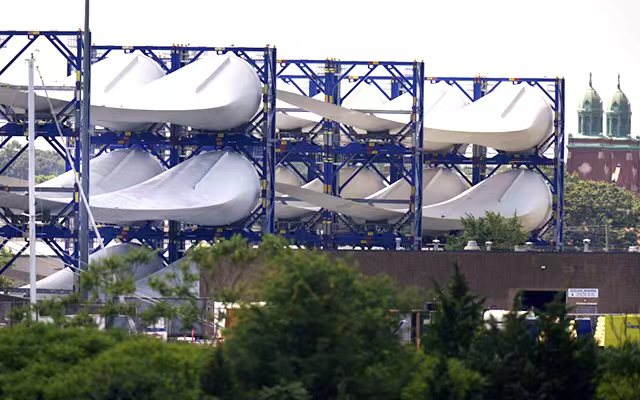The Vineyard Wind Incident: A Wake-Up Call
In the summer of 2024, the Vineyard Wind offshore project in the United States faced a setback when one of its giant GE turbine blades fractured and eventually washed up onshore. Beyond the immediate disruption, the accident triggered wider debate in the wind industry. GE Vernova later agreed to a $10.5 million settlement with local businesses, but the real impact went far beyond financial compensation.
The case underlined a growing concern: as turbines get larger and are placed offshore in increasingly tough environments, the risks tied to blade durability, quality control, and long-term reliability cannot be ignored.
Why Do Wind Turbine Blades Fail?
The Materials Behind Mega-Blades
Modern turbine blades are made of advanced composites such as fiberglass and carbon fiber. They are designed to be both lightweight and strong. However, the longer and heavier the blade, the greater the strain from years of bending, vibration, and exposure to moisture or salt air. Even a small weakness can eventually spread into a significant crack.
From Factory Floor to Offshore Farm
The way blades are manufactured also plays a role. Resin bonding, curing processes, and quality inspections must all be flawless. In global supply chains, small lapses in standards can slip through, and those issues only become visible after years of operation at sea.
The Offshore Challenge
Out on the ocean, turbines must stand up to hurricane-force winds, constant salt spray, and heavy storms. For offshore developers, this is both a technical and an economic challenge—because failures are harder and more expensive to repair at sea than on land.
The Ripple Effect: Safety and Costs
Regulators Respond
Events like Vineyard Wind are prompting regulators in both the U.S. and Europe to strengthen certification rules. Extra testing, stricter design standards, and closer monitoring of components are becoming the new norm.
The Price of Failure
When a blade breaks, the costs add up quickly: downtime, insurance claims, and even investor hesitation for future projects. Reliability is no longer just an engineering term—it’s a deciding factor for financial backers as well.
Small-Scale Wind Power: A Different Perspective
Why Residential Wind Turbines Face Lower Risks
Compared with the colossal machines at sea, residential wind turbines and small wind electric generators operate under far less stress. Their blades are shorter, easier to inspect, and much cheaper to replace if needed. This makes them a safer bet for individual users or small communities.
Everyday Applications
Homeowners and farmers are increasingly turning to these systems to generate their own electricity. A wind and solar hybrid system can combine steady solar output during the day with reliable wind generation at night or in winter, creating a more balanced supply. For rural households, farms, and off-grid cabins, this balance can make a big difference.
Innovation: The Path to Safer Wind Energy
Stronger Materials for Blades
Blade manufacturers are experimenting with new composite designs that can flex without cracking. For smaller turbines, companies such as ELEGE New Energy are already using advanced fiberglass blades that start generating at lower wind speeds and hold up better over time.
Distributed Power for Rural Areas
Instead of relying only on massive offshore projects, a growing number of communities are exploring distributed energy. With small wind turbines paired with solar panels and batteries, homes and farms can generate reliable electricity locally, while avoiding the high-risk profile of large offshore machines.
Final Thoughts: Restoring Trust in Wind Power
The Vineyard Wind accident showed the world that even leading companies must constantly improve safety and reliability. For the future of renewable energy, the lesson is clear: innovation must go hand in hand with trust.
For households and small farms, the solution may not be in mega-turbines but in residential wind systems that offer real, dependable performance. By choosing verified equipment and trusted manufacturers, users can enjoy renewable power without the risks that large offshore projects sometimes face.
Reliable Small Wind Turbines from ELEGE New Energy
At ELEGE New Energy, we focus on delivering small wind electric generators that combine safety, performance, and durability. Our Elege Wind Turbine line is built with advanced fiberglass blades, optimized for low startup wind speeds and long service life. With proven exports to Europe, the U.S., and many other regions, we back every unit with international certifications and real performance data.
👉 Explore our full range here: https://energy-elege.com

